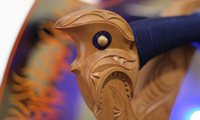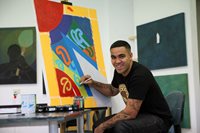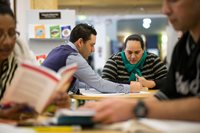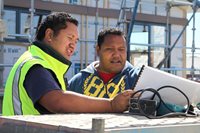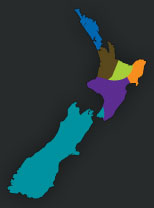On one hand Hohepa Maclean can count the number of fluent Māori speakers that remain in his Far North hapū.
He says there’s just one aunt in his entire whānau who can perform the karanga to welcome manuhiri.
He also knows of pōwhiri at his marae that have been completed in English because there are few, if any, who can recite their whakapapa or whaikōrero.
Hohepa, a Te Wānanga o Aotearoa reo Māori kaiako, says it’s a grim and depressing reality his people are facing and one that is perhaps not unfamiliar to other hapū.
“Within a generation or two we could lose the reo or be left with literally a handful of people who can speak the language.”
“It’s very sad.”
Hohepa, who is also a Te Panekiretanga o te reo Māori alumni, is studying towards his PhD at Auckland University of Technology researching the health of his hapū Patukoraha.
His post-graduate research saw him develop a language strategy for both Patukoraha and Te Whānau Moana, both subtribes of Ngāti Kahu.
He is now trying to find language motivation theories to increase the need among his whānau to want to learn their reo and whakapapa.
“The question that came to me was how do you translate positive attitudes in to positive action and what is it that motivates people to not just learn Te Ara Reo Māori 1, 2 and 3, but to really carry on and really learn te reo Māori so that’s the basis of my thesis.”
“I want to know what motivates people to learn their native languages and how can you put that in to strategy.”
Hohepa’s research has found a lot of literature around people learning second languages like Japanese schoolchildren learning English at school and new immigrants picking up another language as they integrate in to a new culture.
“But there’s not a lot around with regards to people learning their own language other than the fact it’s their own language and they might not necessarily get any wider social-standing or economic benefits from it.”
He said many were motivated to learn Māori by their service to their whānau and iwi and the belief they must fulfil certain aspects on the marae.
His post-graduate research revealed there are about 500 people of Patukoraha descent.
But despite his efforts not many were responding to his current study, which could be a sign that others within the wider whānau don’t know him or it could be a sense of apathy.
“But I think there’s an apathy in general to learning the reo if you look at the statistics,” he said.
“Less than five percent are matatau (fluent) and over 80 per cent only have the basics and although there seems to be really good attitudes to it that it’s important and has a significant part in Māori identity there wasn’t a coinciding application to learning te reo.”
Hohepa’s research is the first of its kind based on his people.
He knows the findings, which should be made available by the end of 2016, will have implications not only for his hapū but others throughout Aotearoa and even other cultures abroad who are trying to revitalise their language.
He fears that his people could have a complete loss of language.
“That’s true. We don’t know the full extent as to how many of our mokopuna are going through kōhanga but we know that less than a third are in Maori education.”
-
 Kāinga
Home
Kāinga
Home
-
 Kāinga
Home
Kāinga
Home
-
Ngā ĀkorangaOur Programmes
Ngā Ākoranga - Our Programmes
-
Ngā RoheOur Locations
Ngā Rohe - Our Locations : Main Service Centres
-
Ngā TauiraStudents
Ngā Tauira - Students
- HonongaStay Connected
- Te WhareAbout Us

